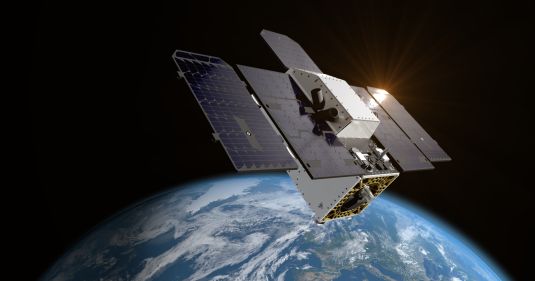 Home - Environmental monitoring - Applications - NASA-Designed Greenhouse Gas-Detection Instrument Launches
Home - Environmental monitoring - Applications - NASA-Designed Greenhouse Gas-Detection Instrument Launches Developed by the agency’s Jet Propulsion Laboratory, the imaging spectrometer will provide actionable data to help reduce emissions that contribute to global warming.
Tanager-1, the Carbon Mapper Coalition’s first satellite, which carries a state-of-the-art, NASA-designed greenhouse-gas-tracking instrument, is in Earth orbit after lifting off aboard a SpaceX Falcon 9 rocket from Space Launch Complex 4E at Vandenberg Space Force Base in California at 11:56 a.m. PDT Friday, Aug. 16. Ground controllers successfully established communications with Tanager-1 at 2:45 p.m. PDT the same day.

The satellite will use imaging spectrometer technology developed at NASA’s Jet Propulsion Laboratory in Southern California to measure methane and carbon dioxide point-source emissions, down to the level of individual facilities and equipment, on a global scale. Tanager-1 was developed as part of a philanthropically funded public-private coalition led by the nonprofit Carbon Mapper. Planet Labs PBC, which built Tanager-1, and JPL are both members of the Carbon Mapper Coalition and plan to launch a second Tanager satellite equipped with a JPL-built imaging spectrometer at a later date.
“The imaging spectrometer technology aboard Tanager-1 is the product of four decades of development at NASA JPL and truly in a class of its own,” said JPL Director Laurie Leshin. “The data that this public-private partnership provides on sources of greenhouse gas emissions will be precise and global, making it beneficial to everyone.”
Once in operation, the spacecraft will scan about 50,000 square miles (130,000 square kilometers) of Earth’s surface per day. Carbon Mapper scientists will analyze data from Tanager-1 to identify gas plumes with the unique spectral signatures of methane and carbon dioxide — and pinpoint their sources. Plume data will be publicly available online at the Carbon Mapper data portal.
Methane and carbon dioxide are the greenhouse gases that contribute most to climate change. About half of methane emissions worldwide result from human activities — primarily from the fossil fuel, agriculture, and waste management industries. Meanwhile, there is now 50% more carbon dioxide in the atmosphere than there was in 1750, an increase largely due to the extraction and burning of coal, oil, and gas.
“The Carbon Mapper Coalition is a prime example of how organizations from different sectors are uniting around a common goal of addressing climate change,” said Riley Duren, Carbon Mapper CEO. “By detecting, pinpointing, and quantifying super-emitters and making this data accessible to decision-makers, we can drive significant action around the world to cut emissions now.”
The imaging spectrometer aboard the satellite measures hundreds of wavelengths of light that are reflected by Earth’s surface. Different compounds in the planet’s atmosphere — including methane and carbon dioxide — absorb different wavelengths of light, leaving spectral “fingerprints” that the imaging spectrometer can identify. These infrared fingerprints can enable researchers to pinpoint and quantify strong greenhouse gas emissions, potentially accelerating mitigation efforts.
Tanager-1 is part of a broader effort to make methane and carbon dioxide data accessible and actionable. That effort includes using measurements provided by NASA’s EMIT (Earth Surface Mineral Dust Source Investigation), an imaging spectrometer developed by JPL and installed on the International Space Station.
This article is reproduced in full from:
https://www.nasa.gov/earth/climate-change/nasa-designed-greenhouse-gas-detection-instrument-launches/
 Tel:+86-400 961 6990 Email:info@healthyphoton.com
Add:Room 305, Building 1, Zhongchuang Science Park, Jinyuan Road, Panhuo Street, Yinzhou District, Ningbo City,China
Tel:+86-400 961 6990 Email:info@healthyphoton.com
Add:Room 305, Building 1, Zhongchuang Science Park, Jinyuan Road, Panhuo Street, Yinzhou District, Ningbo City,China


